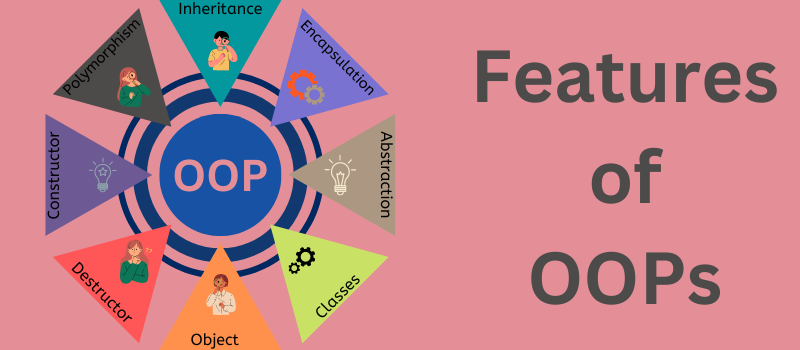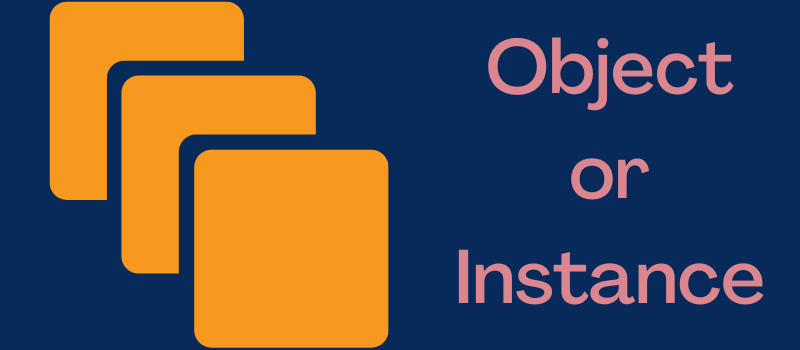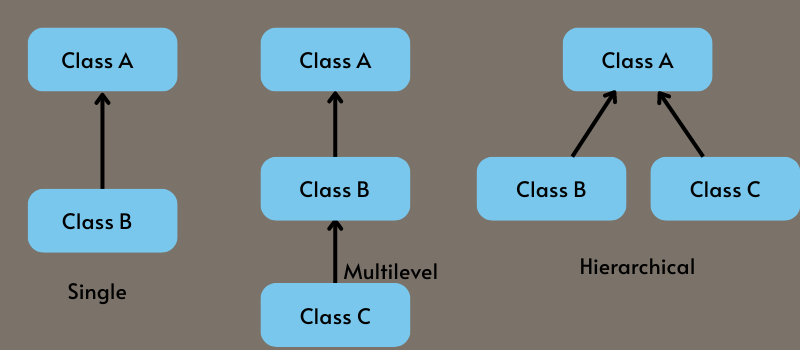Object Oriented Programming interview questions can help programmers and developers enhance their knowledge of key concepts in the programming world.
OOP is one of the most necessary and needful programming paradigms, focusing on objects and classes instead of procedures and functions.
Some OOP-based programming languages are Objective-C, Java, Ada, Perl, Python, C++, and more.
Major companies seek developers proficient in object-oriented approaches as well as patterns.
So, if you are planning to appear for such an interview process, you must have an in-depth understanding of the OOP concepts.
Let’s look at some of the frequently asked OOP interview questions and answers to help you prepare for interviews and tests.
Object Oriented Programming (OOP): An Overview

OOP is a programming paradigm that revolves around objects. Here, the objects are considered as real-world instances, like a class that includes some behaviors and characteristics specified in the class template.
For example, let’s consider a car. According to the OOPs model:
- Object: A car. It can be of any type or model, such as the car you own.
- Class: The car’s model or type, such as BMW, Chevrolet, Kia, Audi, and more.
- Characteristics: Color of the car, chassis number of the car, engine type, gear type, and more.
- Behavior: How to change the gear, how to start the car, and more.
Here, characteristics are also known as properties, attributes, or data, whereas behaviors are known as procedures, methods, or functions in programming languages.
So, let’s start with some frequently asked OOP interview questions.
What is meant by the term OOPs?
Answer: Object Oriented Programming (OOP) is a programming model based on objects and classes instead of procedures and functions. Individual objects are arranged into classes. OOPs describes real-world entities with concepts like polymorphism, hiding, inheritance, etc., and programming paradigms.
OOPs bind code and data together. Objects are real-world entities defined via classes with specific characteristics and behavior, whereas a class is defined as the pattern for a specific object. It is also known as a user-defined datatype.
This includes programs for design and manufacturing along with the mobile application. For example, you can use OOP for manufacturing system simulation software.
What are some other programming paradigms than OOPs?

Answer: Programming paradigms are the method of categorizing programming languages based on each language’s feature. There are two types of programming paradigms:
- Imperative Programming Paradigm: It focuses on how to execute logic and defines the control flow. It includes the Procedural Programming Paradigm, Object Oriented Programming (OOP), and Parallel Programming.
- Declarative Programming Paradigm: It focuses on what to execute in the program and defines its logic, not the control flow. It includes the Logical Programming Paradigm, Functional Programming Paradigm, and Database Programming Paradigm.
What is the difference between OOP and SOP?
Answer: Let’s understand the difference between OOP and SOP with this table:
| Object Oriented Programming | Structure Oriented Programming |
| It is a programming model based on objects instead of procedures and functions. | It provides a logical structure to the program, where the programs are divided into functions. |
| Follows a bottom-up approach | Follows a top-down approach |
| Provides data hiding or encapsulation | It doesn’t provide data hiding |
| It can solve complex problems. | It can solve moderate problems. |
| Low redundancy as code can be used again | It doesn’t support code reusability. |
| More flexible | Less flexible |
| Its primary concern is data. | Its primary concern is the logical structure of a program. |
What are the main features of OOPs?

Answer: Here are the main features of OOPs:
- Inheritance
- Encapsulation
- Abstraction
- Polymorphism
- Method overriding
- Method overloading
- Objects
- Classes
- Constructors and destructors
Inheritance, polymorphism, and encapsulation are the fundamental elements of OOP that differentiate these features from non-OOP languages.
What is encapsulation?
Answer: Encapsulation is a method of putting class, variables, methods, and more inside a capsule that is required to do the work and present the same capsule to the user. In simple terms, all the necessary methods and data are put together, and the unnecessary details are hidden from the users.
It can also be defined in other ways:
- Data binding: Encapsulation is a process of binding data members along with the methods together as a class or as a whole.
- Data hiding: Encapsulation is a process of hiding unnecessary information, such as access restrictions to the member of an object, etc.
What is Polymorphism?

Answer: Let’s understand polymorphism by separating the term into two words that form it:
“Poly” means “many”
“Morph” means “shapes”
So, polymorphism can be described as an object that has different shapes.
In OOPs, it is referred to as the process through which some data, object, method, or code behaves differently under multiple contexts or circumstances. There are two types of polymorphism in the OOPs model:
- Run time polymorphism
- Compile time polymorphism
In other words, it is the multiple definitions of a single interface. For example, there is a class named ‘vehicle’, which consists of a method’ speed’. It is impossible to define the speed as different vehicles have different speeds. Thus, this can be defined in the subclasses of various definitions for various vehicles.
What is Static Polymorphism?
Answer: Static polymorphism is also known as compile time polymorphism. It is the feature through which an object can be linked with the respective operator or function based on the values. This can be achieved through operator overloading or method overloading.
Here, the methods use a similar name, but the parameter of each name varies. The object behaves differently for a similar trigger. Thus, multiple methods are implemented in the same class.
What is Dynamic Polymorphism?

Answer: Dynamic polymorphism is also known as runtime polymorphism. It refers to the type of polymorphism in OOPs through which the actual incorporation of function is settled during the execution or runtime. It can be achieved by method overriding.
For example, two classes, bike and Yamaha are created, and the class Yamaha extends the bike class overriding its run() method. Since the subclass method overrides the parent class method, it is invoked at run time.
What is a Class?
Answer: A class can be defined as the blueprint or template that contains some values, called member data. It also includes some rules, which are known as functions or behaviors. When you create an object, it automatically takes the functions and data defined in the class.
However, a class is a blueprint or template for objects. One can design as many objects as per the requirement based on a class. For example, a car’s template is created at first. After that, different units of cars are designed based on the car’s template.
What is an Object?

Answer: The object can be defined as the instance of a class that contains the instance of behaviors and members defined in the template. The object is the actual entity a user interacts with, but class is just a blueprint for that object.
Thus, objects have some characteristics or behavior and consume space—for example, a specific car model.
What is the difference between a Class and a Structure?
Answer: Let’s understand this with the help of a table:
| Class | Structure |
| Classes are of reference types. | Structures are of value types. |
| It is allocated to heap memory. | It is allocated on stack memory. |
| Allocation is cheaper in the large reference type | Allocation is cheaper in value type than a reference type |
| It has limitless features. | It has limited features. |
| A class is used in large programs. | A structure is used in small programs. |
| It contains a constructor and a destructor. | It contains parameterized or static constructor. |
| It uses a new() keyword every time it creates instances. | It can easily create instances with or without any keywords. |
| A class can inherit from another class. | A structure is not allowed to inherit. |
| The data members of a class can be protected. | The data members of a structure can’t be protected. |
| Function members can be abstract or virtual | Function members can’t be abstract or virtual |
| Two different variables of class can include the reference of a similar object. | Each variable contains its own copy. |
What is Inheritance?

Answer: Inheritance is one of the features of OOPs that enable a class to inherit the main properties of another class. For example, if ‘vehicle’ is a class then ‘car’, ‘bike’, etc., are other classes that can inherit key properties from the class’ vehicle’.
This feature helps in getting rid of redundant code; hence, reducing the size of the code. In simple terms, inheritance is defined as the receiver of properties from the parent class to the child class. Here, ‘vehicle’ is the parent class, and ‘car’ or ‘bike’ are child classes from the above example.
This way, you can reuse the programming code of one class in another class without writing the same code again or wasting time in the process.
What are the various types of inheritance?
Answer: There are various types of inheritance used in the OOPs model, such as:
- Single inheritance: It defines as the inheritance in which a single class inherits common functions of a single base class.
- Multiple inheritances: It comes into the picture when a single class inherits more than one class.
- Multilevel inheritance: This means a class inherits from other classes, which are subclasses of some other class.
- Hierarchical inheritance: It refers to the inheritance where one class has multiple subclasses.
- Hybrid inheritance: It is the combination of multilevel and multiple inheritances.
What are the limitations of inheritance?

Answer: Some of the limitations of inheritance are as follows:
- It increases the effort and time required to execute the program. This is because it requires jumping from one class to another class frequently, which takes time.
- The parent class, along with the child class, are coupled very tightly, so, less flexibility.
- It needs careful incorporation, or else it would lead to insufficient or incorrect results.
- A single modification in the program may lead to a change in code in both parent and child classes.
What is Abstraction?
Answer: Abstraction is one of the elements of OOPs. The key role of abstraction is to handle complexity. This is done by hiding unwanted details from the users. This allows users to implement complex logic on top of abstraction without thinking about the hidden complexity.
For example, if you are a coffee lover, you need to know how much milk, coffee beans, and sugar cubes you want to add to make a cup of coffee using a coffee machine. There is no point in thinking about the working principle of that machine. The coffee machine is a hidden complexity that you don’t need to know, but the process of making a coffee is a necessity.
There are two types of abstraction:
- Data abstraction
- Process abstraction
What is a Constructor?

Answer: A constructor is a special method in the class or structure whose name is similar to the class name. It serves the required purpose of initializing objects. It also helps in instantiating member data as well as methods to assign objects to the class.
When creating a constructor, a few things are necessary to keep in mind:
- It is named the same as the class name.
- It can’t be abstract, final, or static.
- It doesn’t have any return type variable.
What are the various types of constructors in C++?
Answer: There are mainly three types of constructors in C++:
- Default constructor: A constructor with no parameters or arguments in the definition. This type of constructor is used to initialize the data members or variables with real values.
- Parameterized Constructor: It contains arguments or parameters in the declaration and definition. More than one parameter can pass through the parameterized constructor. It is used for overloading to know the differences in multiple constructors.
- Copy constructor: It is a member function that uses another object of a similar class to initialize an object. Moreover, it helps copy data from a single object to another.
What is a Destructor?

Answer: A destructor is a method called automatically while destroying an object. It implements certain actions:
- Recovering heap space that is allocated before during the initialization of the object
- Closing database connections and files
- Releasing network resources and resource locks
- Performing various housekeeping tasks
In other words, a destructor destroys the objects initialized by the constructor. It is a special member function with the same name as the class name but is preceded by a (~) symbol. A destructor can be overloaded as it is a one-way function.
What is Garbage Collection (GC)?
Answer: Garbage collection (GC) is a memory recovery element built into programming languages, such as Java and C#. A GC-enabled programming language contains at least one garbage collector that frees up memory space automatically that’s no longer required within a program.
Garbage collection confirms that the program still is within its memory quota. It prevents developers from manually managing the program’s memory, which minimizes memory-related bugs.
What is exception handling?

Answer: Exception handling is a method of responding to unexpected events while a computer program runs. Programmers must “handle” unwanted events (exceptions) to prevent a system or program from crashing. Without this method, exceptions may disrupt the common operation of a program and result in inefficiencies or risks.
What is a try/catch block?
Answer: Try or catch are the keywords that represent exception handlings due to coding or data errors during the execution of a program.
- A try block is the code block where exceptions occur
- A catch block handles and catches try block exceptions
The try and catch statements are frequently used in various programming languages, including C++. C#, Java, SQL, and JavaScript. Every try statement matches with a catch statement in order to handle the execution. Here are a few more things to remember in try and catch statements:
- A try block is followed by the catch block.
- A try block is followed by at least one catch block.
- A try block is followed by another try block and further followed by the catch block.
Conclusion
OOP is an essential concept for programmers to know. Learning it thoroughly will also help you program well in languages that use the OOP concepts.
If you are preparing for an interview or test, the above interview questions and answers will help you refresh your understanding of OOP concepts like classes, objects, encapsulation, polymorphism, inheritance, abstraction, and more. This way, you can confidently face the interviews and get through them successfully to build your career.
You may also look at some of these SQL Interview Questions.
Si quiere puede hacernos una donación por el trabajo que hacemos, lo apreciaremos mucho.
Direcciones de Billetera:
- BTC: 14xsuQRtT3Abek4zgDWZxJXs9VRdwxyPUS
- USDT: TQmV9FyrcpeaZMro3M1yeEHnNjv7xKZDNe
- BNB: 0x2fdb9034507b6d505d351a6f59d877040d0edb0f
- DOGE: D5SZesmFQGYVkE5trYYLF8hNPBgXgYcmrx
También puede seguirnos en nuestras Redes sociales para mantenerse al tanto de los últimos post de la web:
- Telegram
Disclaimer: En Cryptoshitcompra.com no nos hacemos responsables de ninguna inversión de ningún visitante, nosotros simplemente damos información sobre Tokens, juegos NFT y criptomonedas, no recomendamos inversiones


